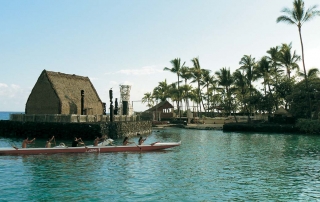Honolulu Joins the 100 Resilient Cities Initiative
On June 8, 2017, 140 stakeholders from 19 sectors representing 117 organizations participated in the Resilient O‘ahu Workshop at the Neal S. Blaisdell Center. The workshops goal: to welcome Honolulu into the 100 Resilient Cities (100RC) initiative pioneered by the Rockefeller Foundation and begin the collective process of devising a “Resilience Strategy” for Oahu. The newly established Office of Climate Change, Sustainability & Resiliency, created in 2016 when voters approved City Charter Amendment 7, is taking the lead in this effort which falls squarely within its mission to build partnerships to increase sustainability and address climate change on O‘ahu. 100RC was born out of the need for cities, where much of the world’s population resides, to be resilient enough to survive, adapt and grow regardless of increased acute shocks and chronic stresses. Shocks are defined as sudden, sharp events that threaten a city while stresses weaken the fabric of a city over the long haul. Honolulu workshop participants identified top shocks as infrastructure failure, hurricane and other natural disasters with top stressors being rising sea level, high cost of living/access to housing and overreliance on imports. As O‘ahu moves toward formulating a plan, it is important that cultural resources defined as: archaeological sites (surface and buried); historic buildings and structures; objects; districts; ethnographic sites and cultural landscapes be viewed as valuable assets that need protection under the resiliency strategy. Both shocks and stressors have the potential to adversely affect cultural resources by increasing risk of damage or destruction, limiting access to sites which can lead to a loss of connection to a place, culture and traditions and reduced visitation which impacts local business and economy as visitor interest and spending decrease. Resilience implies adaptability, [...]



